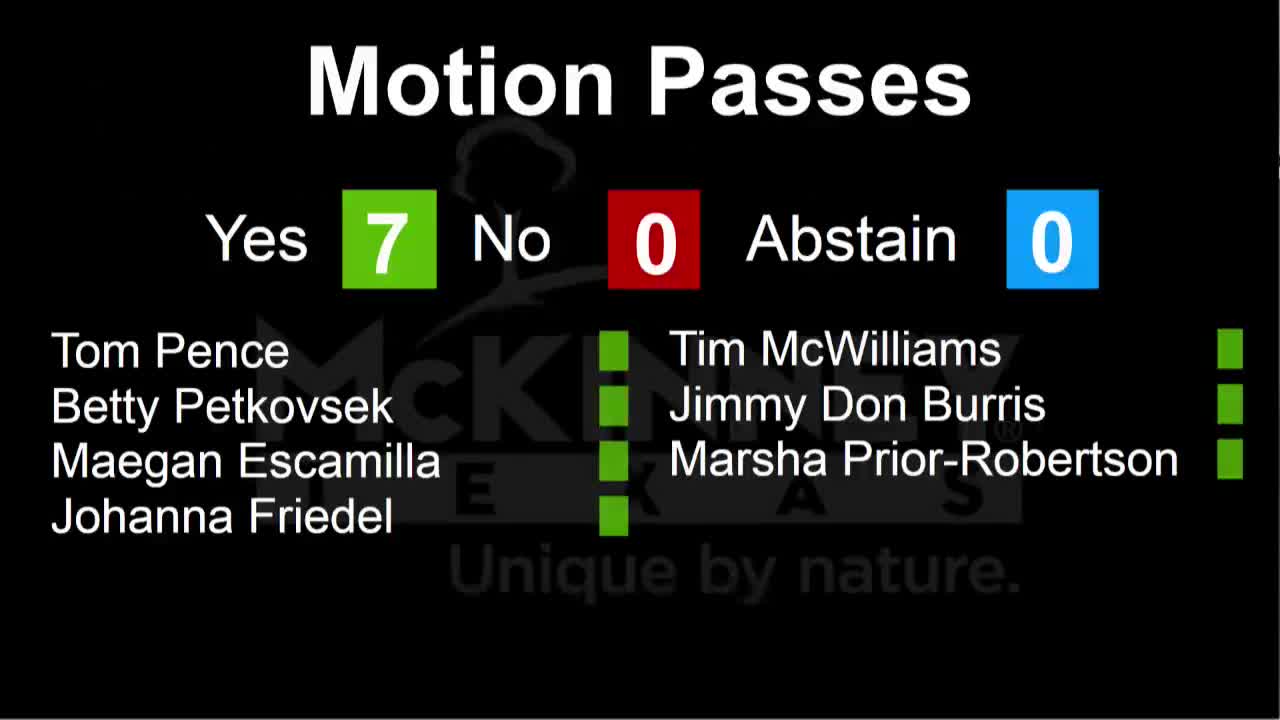McKinney survey reveals architectural treasures and preservation challenges
June 06, 2024 | McKinney, Collin County, Texas

This article was created by AI summarizing key points discussed. AI makes mistakes, so for full details and context, please refer to the video of the full meeting. Please report any errors so we can fix them. Report an error »

During a recent government meeting, officials discussed the findings of the historic McKinney survey, focusing on the architectural styles and preservation priorities identified in the report. Cassie, the presenter, outlined the survey's structure, which is divided into three sections, with the current discussion centering on architectural styles.
The survey categorized McKinney's architecture into twelve distinct styles, highlighting that the Ranch style is the most prevalent, documented 843 times, followed by Minimal Traditional (546), Craftsman (389), and National Folk (116). Notably, many of these styles are more common outside the historic overlay district than within it. The report also identified a significant number of buildings classified as \"Other\" or \"No Style,\" indicating structures that do not conform to traditional architectural classifications.
The survey revealed that 89% of the surveyed area is residential, with a concentration of significant structures dating from 1807 to 1945 within the historic overlay district. The report also noted that the most common materials used in these buildings are wood siding, brick, and composite shingles, with replacement windows being the most frequent alteration observed.
In terms of preservation priorities, the survey assessed 6,278 properties, categorizing them from high to low significance. Approximately 2,920 properties were deemed non-contributing, primarily due to being built after 1975. The report indicated that preservation priorities can shift over time, with 57 properties changing status since the last survey in 2015—23 increasing in priority and 34 decreasing.
Specific examples were provided, illustrating properties that had their preservation priority adjusted based on recent restorations or alterations. The meeting concluded with an invitation for further discussions and training sessions on the survey's findings, emphasizing the importance of ongoing engagement with the community regarding historic preservation efforts.
The survey categorized McKinney's architecture into twelve distinct styles, highlighting that the Ranch style is the most prevalent, documented 843 times, followed by Minimal Traditional (546), Craftsman (389), and National Folk (116). Notably, many of these styles are more common outside the historic overlay district than within it. The report also identified a significant number of buildings classified as \"Other\" or \"No Style,\" indicating structures that do not conform to traditional architectural classifications.
The survey revealed that 89% of the surveyed area is residential, with a concentration of significant structures dating from 1807 to 1945 within the historic overlay district. The report also noted that the most common materials used in these buildings are wood siding, brick, and composite shingles, with replacement windows being the most frequent alteration observed.
In terms of preservation priorities, the survey assessed 6,278 properties, categorizing them from high to low significance. Approximately 2,920 properties were deemed non-contributing, primarily due to being built after 1975. The report indicated that preservation priorities can shift over time, with 57 properties changing status since the last survey in 2015—23 increasing in priority and 34 decreasing.
Specific examples were provided, illustrating properties that had their preservation priority adjusted based on recent restorations or alterations. The meeting concluded with an invitation for further discussions and training sessions on the survey's findings, emphasizing the importance of ongoing engagement with the community regarding historic preservation efforts.
View full meeting
This article is based on a recent meeting—watch the full video and explore the complete transcript for deeper insights into the discussion.
View full meeting
